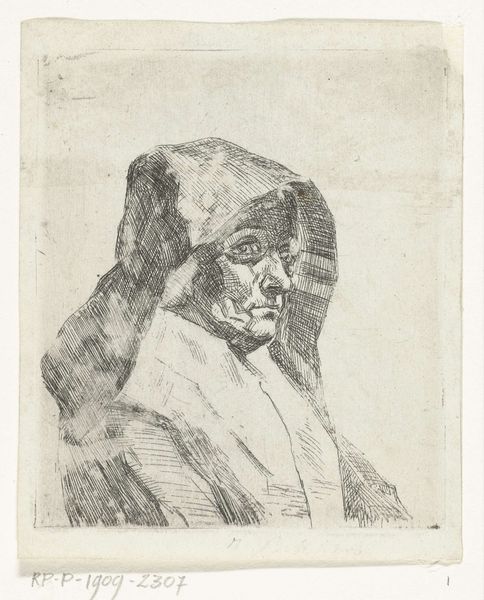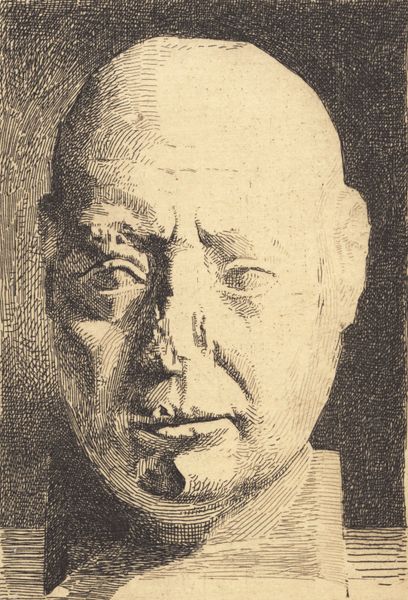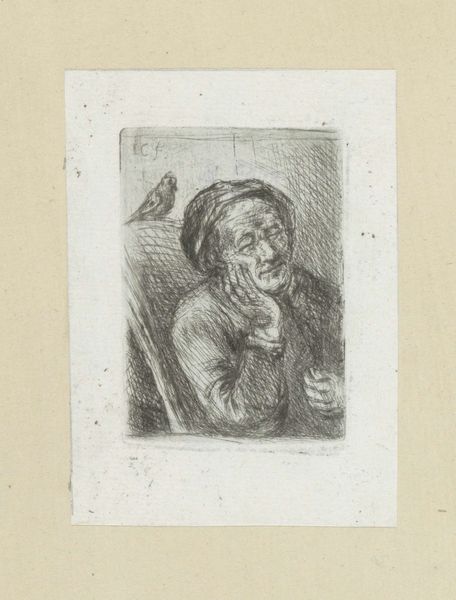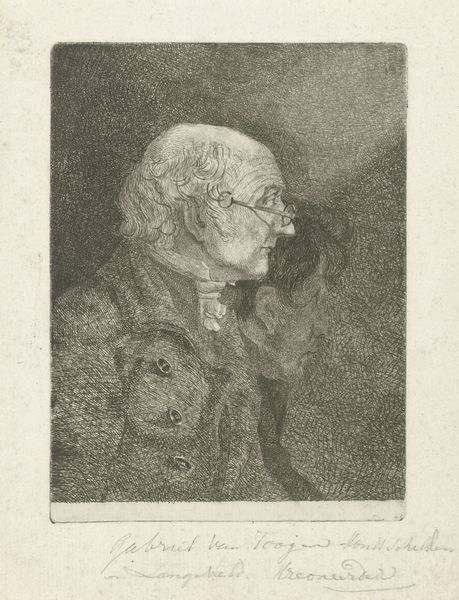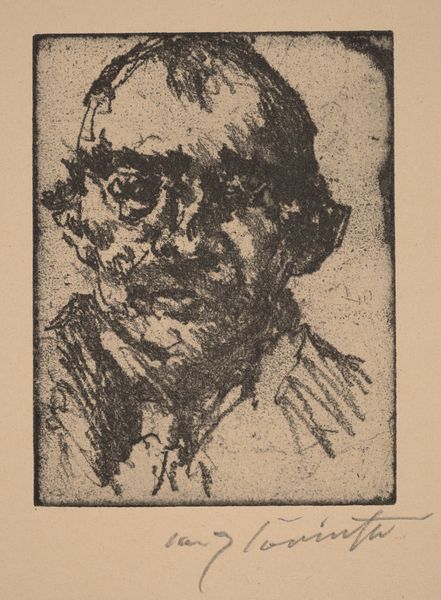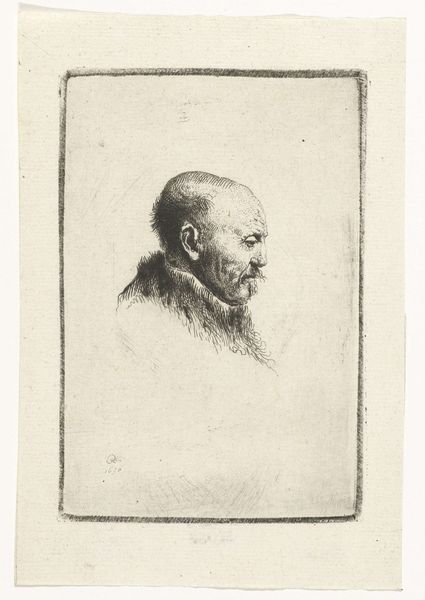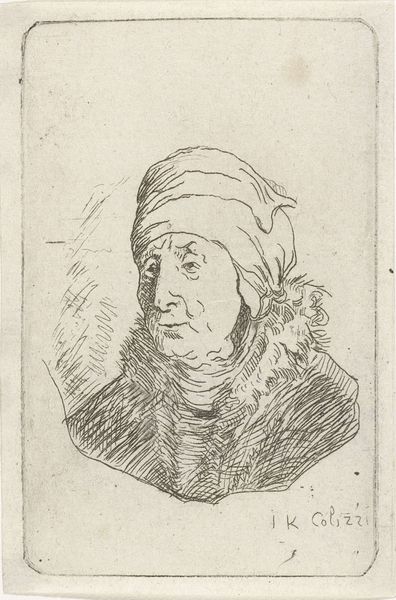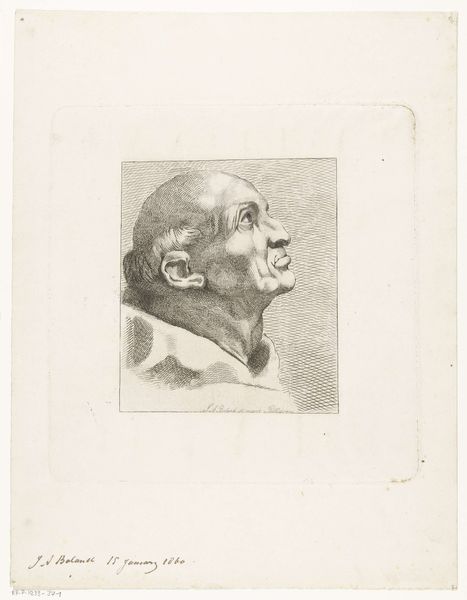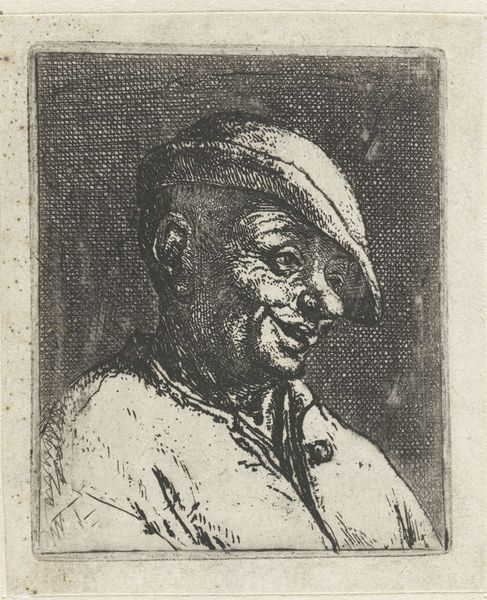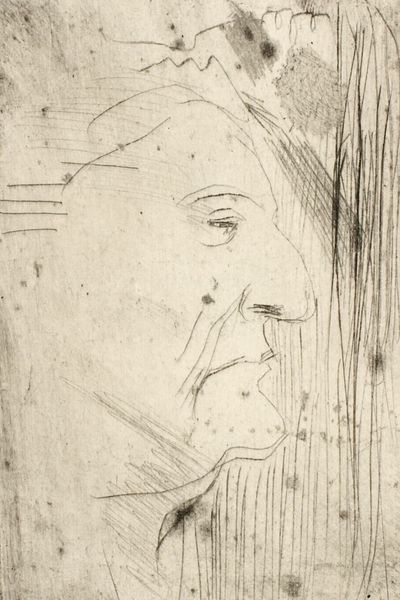
print, etching
#
portrait
# print
#
etching
#
old engraving style
#
realism
#
monochrome
Dimensions: height 89 mm, width 52 mm
Copyright: Rijks Museum: Open Domain
Curator: Here we have Salomon van Witsen’s "Oude vrouw met muts," which translates to "Old Woman with a Bonnet," an etching that he likely created sometime between 1848 and 1887. Editor: It’s a striking image. The strong, almost frantic, lines create a sense of weariness and vulnerability, don’t you think? The monochrome palette only intensifies that feeling of austerity. Curator: Absolutely. The use of etching as a medium during this period offered a direct way to connect with a growing audience due to printmaking's reproducibility. Witsen chose to depict this woman at a time of significant social upheaval, industrialization, and growing awareness of class disparities. Editor: The composition itself is fascinating. The stark contrast between light and shadow accentuates the planes of her face. Observe how the texture of the bonnet frames her features, guiding our eye to the deep lines etched around her mouth and eyes. There's a real tension there, between the softness of the fabric implied and the harshness of her expression. Curator: The "bonnet," as you call it, is indeed crucial. It positions the woman within a specific socio-economic context; a symbol of the working class in Dutch society, highlighting the labor and hardship often associated with aging women of her background. It serves as both a marker of identity and a visual representation of her lived experiences. Editor: But it's the pure abstraction of line that draws me. The way the artist used the etching needle to build up those intense shadows, to suggest form with such economy of means. Semiotically, these choices become deeply significant as they are used to create meaning about the sitter. Curator: Considering realist artistic practices in the Netherlands, portraying such subjects gave visibility and representation to those frequently ignored or marginalized by dominant narratives. Witsen’s piece is more than just a formal exercise; it offers us the opportunity to contemplate the circumstances and individual humanity of this person, of this woman, rendered at that particular point in time. Editor: An image that reminds us how art, whether representational or abstract, communicates the values of its time. Thank you for providing insight into its meaning. Curator: Thank you. Thinking through this together sheds further light onto this period, these practices, and the individuals caught up in those larger movements.
Comments
No comments
Be the first to comment and join the conversation on the ultimate creative platform.
